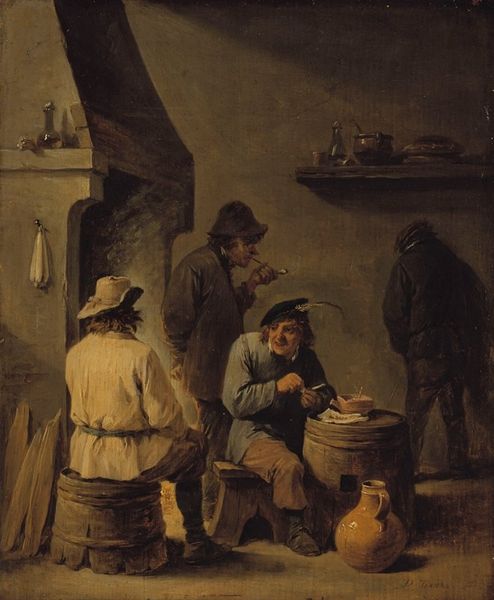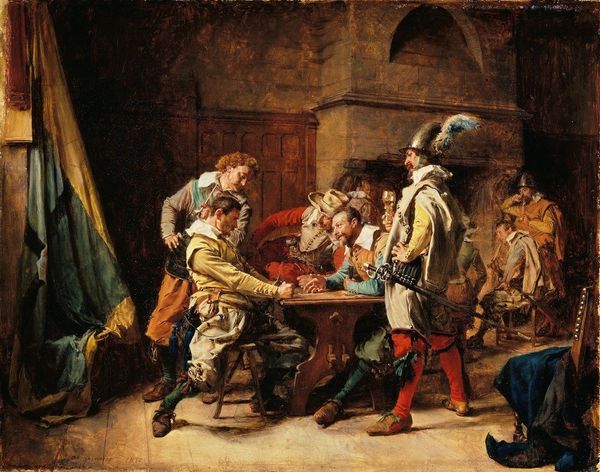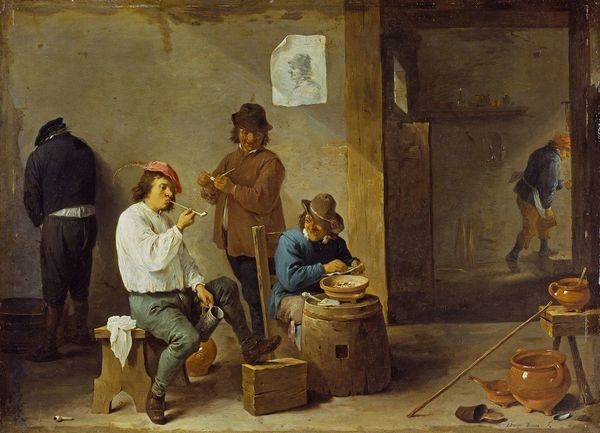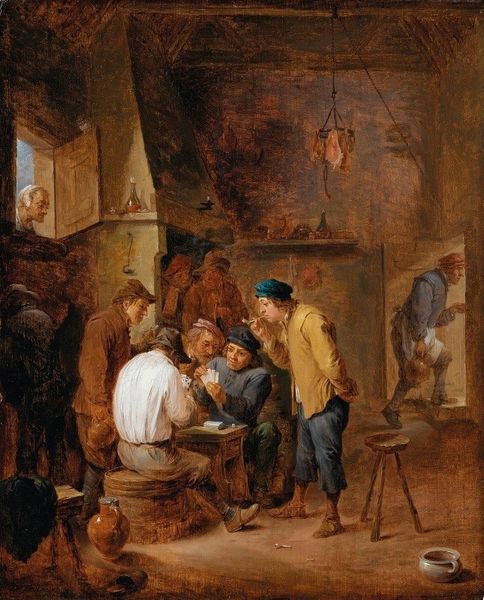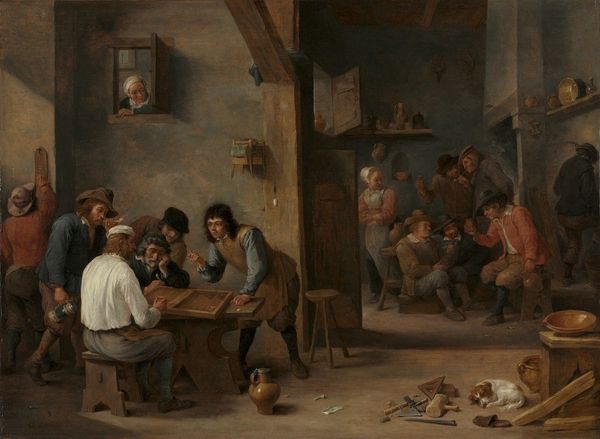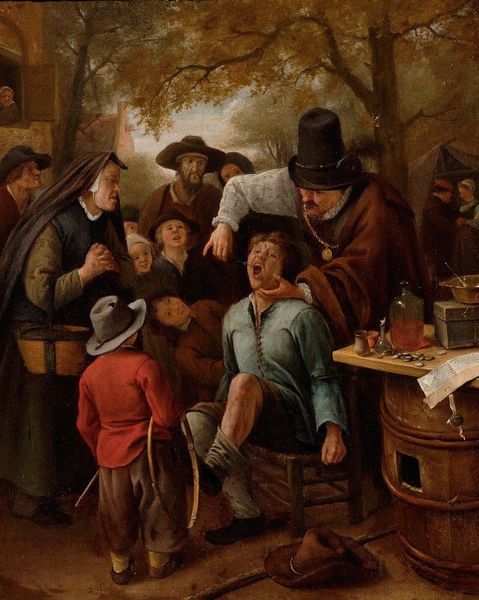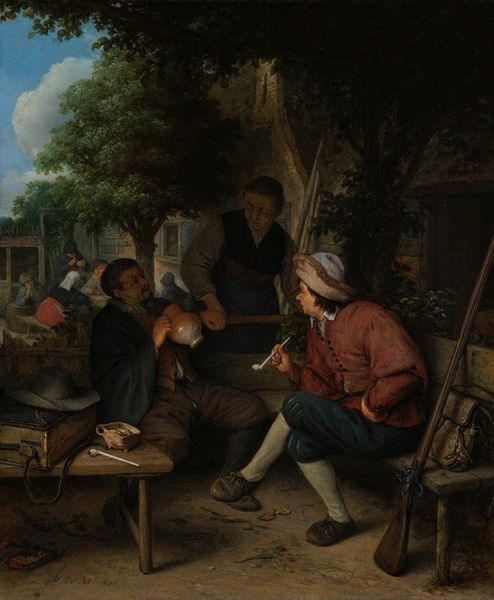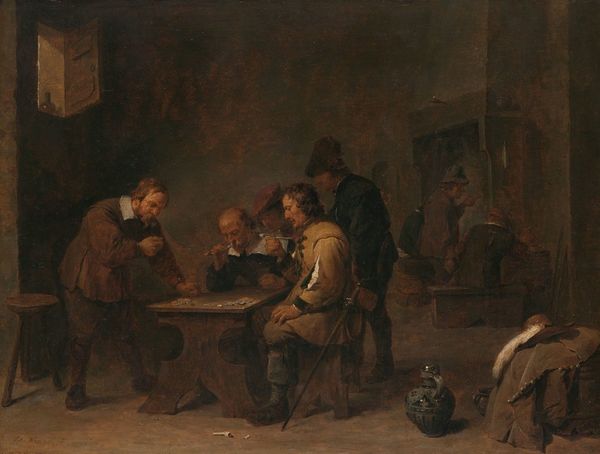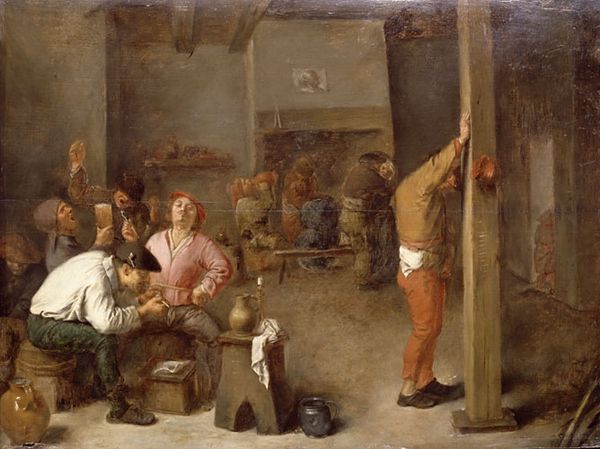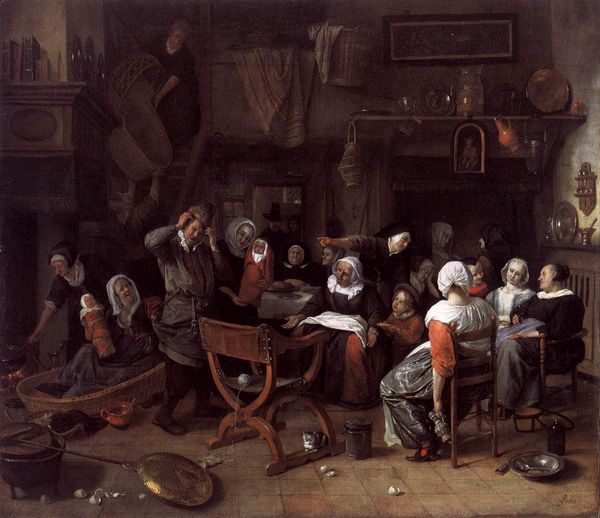
oil-paint
#
narrative-art
#
baroque
#
dutch-golden-age
#
oil-paint
#
figuration
#
oil painting
#
genre-painting
Copyright: Public Domain: Artvee
Curator: What strikes me immediately about this piece is the golden, almost theatrical light spilling across the gamblers’ faces, and that lovely ochre glow emanating from the background. Editor: And that's quite fitting, isn't it? We are looking at David Teniers the Younger's oil painting "Gambling Scene at an Inn", from the late 1640s. Genre scenes like these are compelling documents of social life in the Dutch Golden Age. What’s visible here goes beyond a mere pastime. Curator: A pastime indeed! The gentleman in red seems quite displeased. Is it just me, or do you get the sense he might be the biggest loser at the table? I'm drawn to how Teniers manages to evoke tension with just a handful of characters in this compressed space. It feels almost cinematic. Editor: The compressed space reflects very real material constraints. Gambling, alcohol, and the ‘company’ of innkeepers weren’t simply colorful details but rather a direct representation of unregulated public spaces during a period of dramatic economic and social transformation in the Netherlands. Notice, the seemingly banal clutter carries moral weight. Curator: Ah, the age-old trope of "gambling is bad, m'kay?" But the artist gives it such verve, don’t you think? Take, for example, that figure to the left carefully tallying up the bill, almost as if he doesn’t want to intrude. Or is he hoping to catch someone trying to leave without paying? Editor: Perhaps Teniers intended to showcase the duality. On one hand, these scenes were pleasurable, leisurely escapes for particular demographics. On the other hand, it's the economic precarity experienced across Dutch society that rendered them vulnerable. Curator: The muted browns, greens, and grays are fascinating. What does that tell us about color theory back then? Editor: That somber palette speaks to the Calvinist values pervasive at the time, a moral seriousness beneath all the boisterous energy. Consider, as well, the artist’s own ties to the court and the way representations like these are politically implicated. It speaks volumes. Curator: Looking closer, I appreciate how the light seems to pick out tiny details like the coins, dice, tankards, and various facial expressions. You sense an invitation to become absorbed in these minute universes within the bigger frame, which may tell its own stories. I may have overlooked them before, I must admit. Editor: Well, that’s exactly why these seemingly ‘simple’ scenes still command our attention. When approached with an interrogative lens, we're able to grasp the broader picture of the moment. It is so important not to sanitize their implications by over-romanticizing them.
Comments
artera over 1 year ago
⋮
David Teniers (1610-90) was born in Antwerp where he studied under his artist father. From a young age, he became more successful than his father and he soon attracted the patronage of prominent church officials and of the newly appointed governor of the southern Netherlands, Archduke Leopold Wilhelm, who made him court painter in Brussels and curator of his painting collection. After Wilhelm left, Teniers remained as court painter to the new governor, Don Juan of Austria, whom he taught to draw and paint. A genre painter from the start, Teniers painted local people enjoying life, especially the agricultural classes of Brabant and Holland. His villagers are natural and jolly. They drink, play cards, chat, and dance; but Seidom quarrel or fight, and Teniers never seemed to tire of showing rustic merrymakings and joyous peasants.
Join the conversation
Join millions of artists and users on Artera today and experience the ultimate creative platform.
